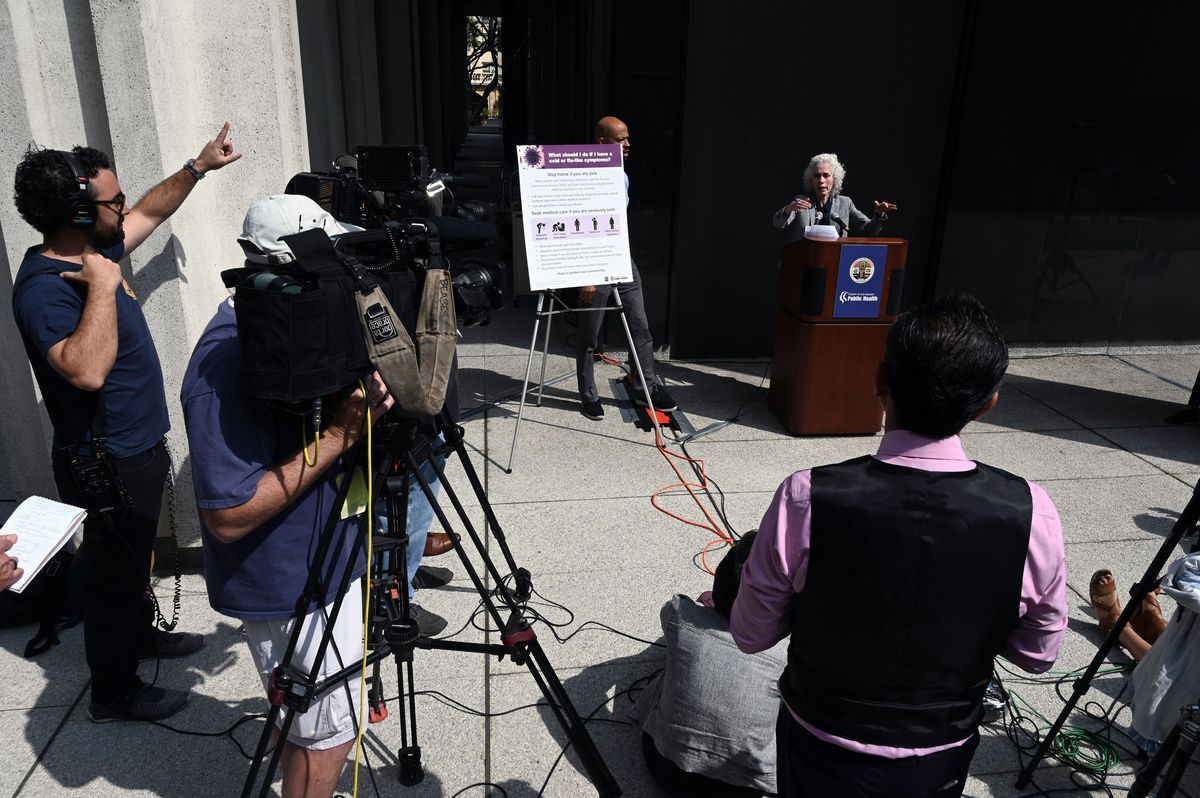Here is another article on the subject of the above post. Yes, its LA county but the same issues and conflict are present all over our country. I thought this was a fairly balanced read but there is lots of other stuff out there presenting different POVs.
Where Is the Data to Support Closing Outdoor Dining in LA? It’s Complicated
Restaurant owners say public health officials can’t definitively link on-site dining with a rise in cases, and they’re (mostly) right — but that’s not why officials shut them down
Restaurant owners, workers, and diners have been
loudly asking the same thing since last Wednesday, November 25, when the Los Angeles County Department of Public Health recommended that restaurants be
closed for outdoor on-site dining: Where is the data?
Frustrated LA operators have spent nearly a year being pushed to the brink — forced to lay off staff, change concepts, amass untold debt,
fight landlords, and stay safe during the largest public health crisis in recent history. Now they’ve been told that the outdoor, open-air spaces they spent thousands to build are
no longer suitable for safe operation while coronavirus cases
rise precipitously across the state, despite little direct data linking restaurants to the uptick. Meanwhile, owners argue, grocery stores and retail shops and outdoor gyms
are allowed to remain open with capacity caps in place, as hotels and airlines continue to ferry and house travelers during the ongoing holiday season.
So where is the data, if it exists? And if it does not, then why did the LA County Department of Public Health implement a change to the latest
public health order in order to prohibit outdoor dining, as directed by the county Board of Supervisors?
The answer is: It’s complicated.
Los Angeles County actually has a fairly robust
contact-tracing program, especially compared to many other parts of the country, which gathers as much data as possible on an infected person’s movements and possible sources of contraction. In theory, tracers would be able to pinpoint a person’s precise moment of exposure, then track that person’s movements before and after the exposure — including at public spaces like restaurants, where other diners and staff members who may have come into contact with an infected person could then be notified. But in practice, with 10 million inhabitants, 31,000 restaurants, few mechanisms currently in place to limit individual travel, and no mandate to collect customer data at restaurants or points of retail, the real data that tracers eventually amass is much less clean.
Using what data is available, public health officials have previously said
that up to 15 percent of COVID infections could be traced to “dining experiences” within greater Los Angeles over the past few months, and that restaurants as a workplace are areas of higher risk. As an industry, restaurants have been
hit with the most infractions by public health inspectors in LA County, and last week Dr. Muntu Davis noted that restaurants had seen a threefold increase in outbreaks among staff over the past several weeks.
Dr. Barbara Ferrer at a press conference in March Photo by ROBYN BECK/AFP via Getty Images
Daily health care publication
California Healthline spoke with UCLA associate professor of community health sciences and epidemiology Shira Shafir about the limited contact tracing data that is available; Shafir says that the “data suggests that even outdoor dining may spread the virus.” County health inspectors say that even with daily check-ins, they’re hitting less than 1 percent of all restaurants countywide per week, and that of those compliance checks they have done,
19 percent of restaurants are not properly following social-distancing guidelines. “Compliance is a big issue,” Dr. Ferrer said in a public address yesterday, “but that’s not why we’ve asked restaurants to close for outdoor dining. We’ve closed them because we are asking everyone to keep their face coverings on.”
To Ferrer’s point, simply asking for causal data is missing the larger point. Contact tracing is messy, yes, and a direct link between restaurants and rising infection rates is hard to pinpoint — but that’s not why the county Board of Supervisors or the Department of Public Health shut down outdoor dining in the first place.
Simply put, county officials agreed to shut down outdoor dining because coronavirus cases and hospitalizations have been rising dramatically over several weeks, and reducing the number of places where people gather — especially unmasked — is one of the levers of power available to them. The DPH and Ferrer
only acted to modify the health order and close outdoor dining because the county Board of Supervisors (who can override the DPH) set a threshold of daily cases for such an action, and LA County blew by it almost immediately. “We had no idea how quickly those numbers would be upon us,” county supervisor Janice Hahn said at a contentious Board of Supervisors meeting last week. “We thought we were weeks away.”
LA public health official Dr. Muntu Davis freely acknowledged last week that the DPH lacks “specific contact tracing showing that restaurants are driving this huge increase in cases,” but noted specifically that gatherings overall
are. “We have to look at every place where we can get back some control,” Ferrer added, “partially because there has been such a steep acceleration of cases.” Since then, LA County’s COVID-19 condition has continued to worsen, leading to a modified safer-at-home order that bans all public gatherings of any kind, outside of protected religious events and protests.
Health officials admit they lack “specific contact tracing showing that restaurants are driving this huge increase in cases.”
The threat of a statewide shelter in place order from Gov. Gavin Newsom still looms. Meanwhile, the city of Pasadena — which has its own public health department — continues to allow outdoor dining at its restaurants, though a recent spate of inspections found
two-thirds of restaurants not in compliance with coronavirus protocols.
As for the metrics that will be used to drive the next public health decision? Last week Supervisor Kathryn Barger put forward a motion to begin
reaching out to local universities like UCLA and USC to “provide feedback and develop strategies and recommendations to guide our future decisions regarding COVID-19 response and reopening our businesses and communities,” though it’s not likely that those universities will have more restaurant-specific data than the Department of Public Health — or that anyone will any time soon, really, without a massive overhaul to the county’s tracing system. Again, it’s complicated.
 )
)
